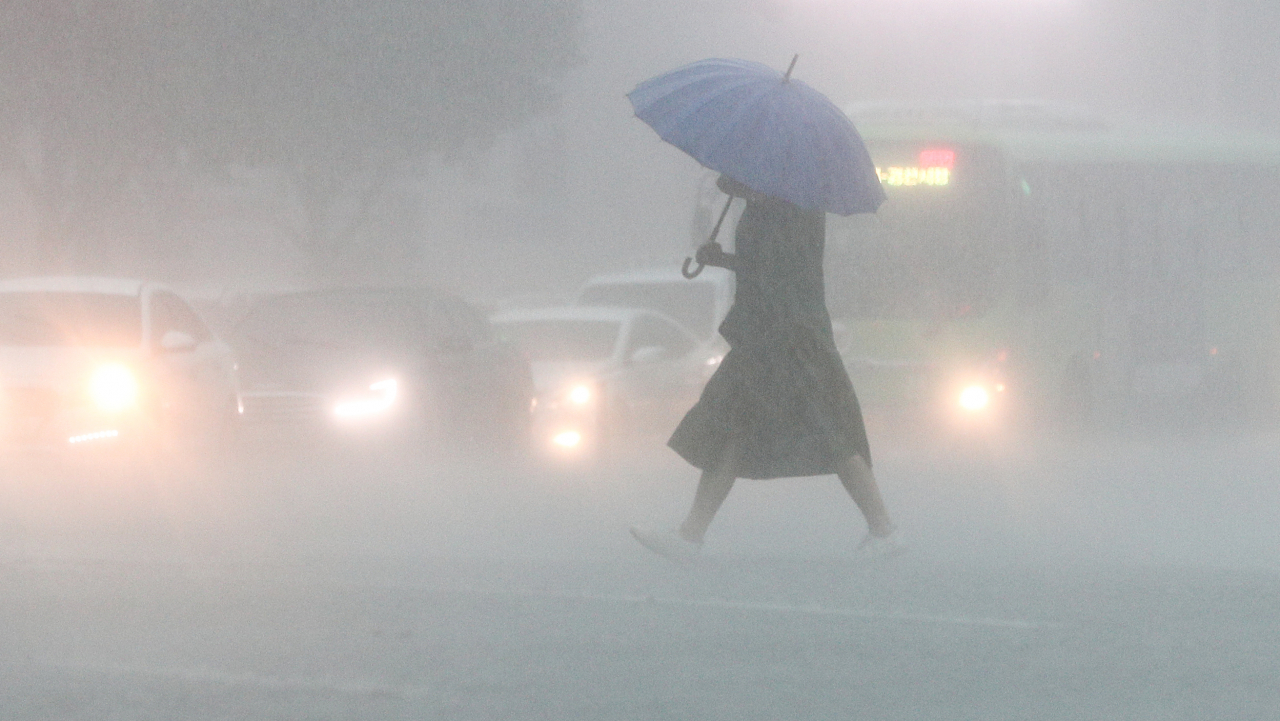 |
A person puts up an umbrella while crossing a street in Daegu, about 240 kilometers southeast of Seoul, on Tuesday due to heavy rain. (Yonhap) |
Heavy rains pounded many parts of South Korea, including the greater Seoul area and the southeastern port city of Busan, on Tuesday, leaving one person missing and causing financial damage, according to the government.
A 68-year-old woman went missing near a stream in Busan, 320 kilometers southeast of Seoul, amid heavy rain around 3:34 p.m., the Central Disaster and Safety Countermeasure Headquarters said.
Firefighters were searching for her while investigations were also under way to find the exact cause of her disappearance.
Earlier in the day, a 75-year-old man was found dead after getting swept away in a stream in Yeoju, about 60 kilometers southeast of Seoul, on Tuesday morning. The authorities, however, classified the death as a safety accident, not damage from rain, as he is assumed to have accidentally fallen down.
The state weather agency had issued a heavy rain advisory for most parts of the country, including Busan and the Seoul metropolitan area, earlier in the day but lifted the advisories in the evening, except for those in some parts of the capital, the surrounding Gyeonggi Province, eastern Gangwon Province, southeastern North Gyeongsang Province and the central region.
Though the advisories have been lifted, hourly precipitation may go up to 80 mm in Gyeonggi Province and some parts of Gangwon Province, the southwestern Jeolla provinces and some parts of North Gyeongsang Province overnight, according to the Korea Meteorological Administration (KMA).
The KMA forecast the greater Seoul area will get up to 180 mm of rain until Wednesday.
On Tuesday, authorities across the country were inundated with reports of fallen street trees, house, road and river flooding, and other damage related to heavy rains.
In Seoul, a section of subway Line 1 temporarily halted operations for about 15 minutes in the afternoon due to heavy rain.
The city has lifted traffic controls on some of the roads that have recovered from inundation as of 9 p.m.
The anti-disaster office said it has ordered related authorities to closely monitor the damage situation and take emergency recovery measures to prevent additional damage from the rain. (Yonhap)







